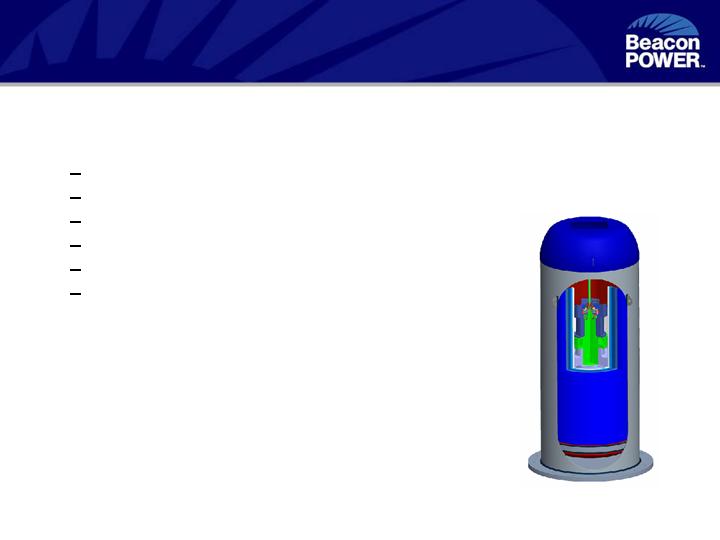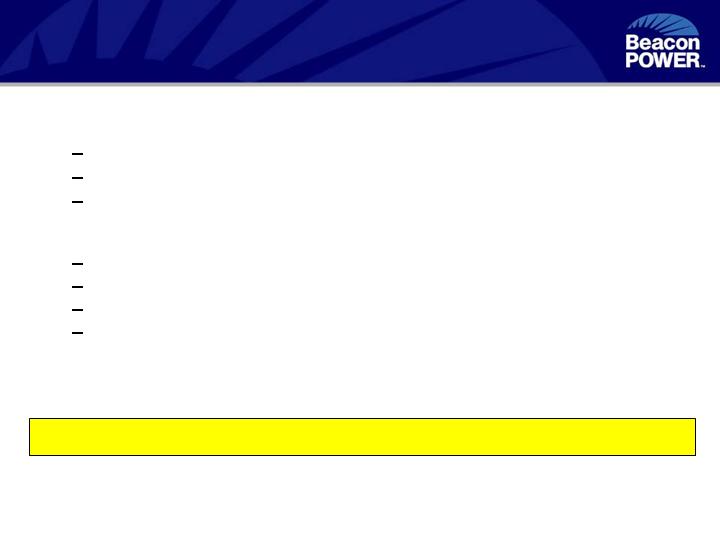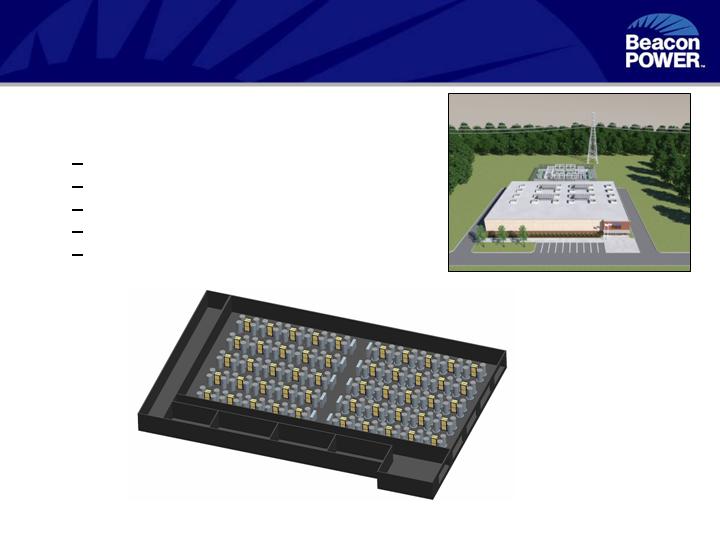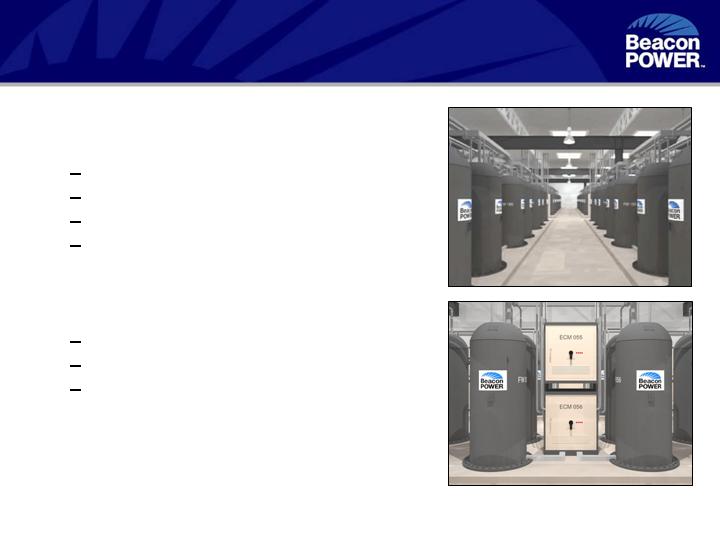
DOE Energy Storage Systems Research
Program Annual Peer Review
Rob Rounds
Sr. Engineer
Flywheel Installations
Beacon Power Corporation
Design of the FESS 20 MW Frequency Regulation Plant
Imre Gyuk
Program Manager
Energy Storage Research
Department of Energy
Garth Corey
Principal Member of Technical Staff
Energy Storage System Program
Sandia National Laboratories
November 2-3
Washington DC, USA

Frequency Regulation
Benefit of Flywheel Based Frequency Regulation
Frees up generator capacity
Fast response may reduce quantity of
necessary frequency regulation
Gives ISO another option
Benefit for deployment of wind power
Environmental
No direct fossil fuel consumption
Zero plant emissions
Increases the Reliability and Stability of the Grid

Business Strategy
Flywheel Based Frequency Regulation
Beacon’s Market Strategy
Sell frequency regulation service instead of product
Provide services via deregulated open-bid markets
Qualify with scale-power demonstration testing
Commercialize with 25 kWh Gen 4 flywheel
1st service revenues in 2007 (1 MW)
10 to 20 MW of service revenues in 2008
Beacon Power’s
Gen4 Flywheel

Technology Comparison
Hydro
Fossil fuel
High level comparison to lead acid facilities
Development of 20 MW FR Plant Drawing Package
Interconnect substation and grid requirements
Environmental considerations regulatory and otherwise
Building design and layout
Operational factors
Optimization of Plant Size (1 to 40 MW)
Program Start Date: September 1, 2006
Design of the 20 MW FESS FR Plant
20 MW Plant Program Overview

Technology Comparison
Flywheel Based Frequency Regulation
Third Party Evaluation of Technology
Cost performance
Environmental impact
Benefit of fast response
Chart courtesy of Eric Hirst & Brendan Kirby used in various papers

Facility Development Goals
Generic Design Modular Design
Design for 6 Month Construction
Optimized Performance
Design for Minimal Maintenance
Design for LEEDS-NC rating
Design of the 20 MW FESS Plant
Conceptual Design

Optimization of Plant Size
Flywheel Based Frequency Regulation
Optimization Studies
Optimal plant size based on region
Land costs
Operational factors, i.e. HVAC Analysis
Addition of PV to offset system losses
Flexible Design
Cost performance
Environmental impact
Benefit of fast response

Frequency Regulation
Summary Conclusions
Program goals linked directly to Market Strategy
Grid Benefits
Release excess generation capacity
Improve stability of grid
Additional ancillary services possible
Environmental Benefits
Generates no emissions
Recycles energy
Reduction in fuel consumption

Frequency Regulation
Statement of Future Work
Technology Comparison
Complete work
Obtain final report
Conceptual Design
Complete evaluation of proposals
Select contractor
Refine building specification
Generate generic drawing package
Optimization Studies
Hire staff
Perform optimization studies








